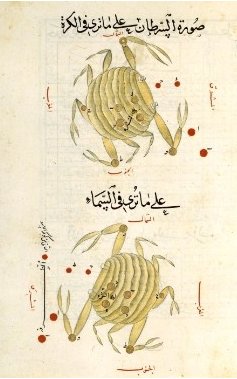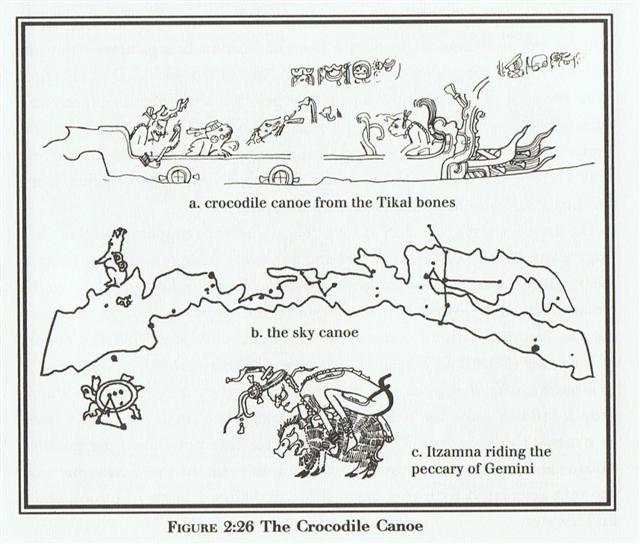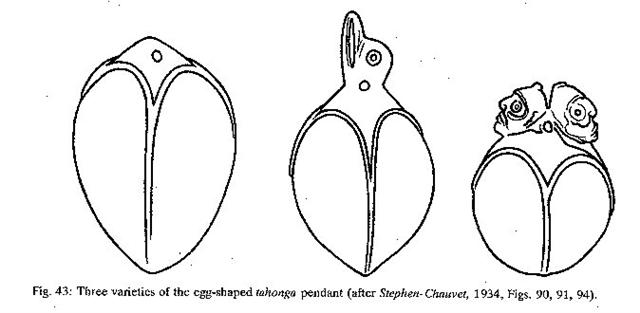Ba2.5
A week before 28 May was 21 May and this was the 1st 3-stone place:
 |
 |
 |
| Ba2-4 |
Ba2-5 (52) |
Ba2-6 (48 + 5) |
| ki to ona o te
haú |
ka rere te
manu kura |
ka rere ki to manu kahua
auroaroa - kua hakairi |
|
A'u 1. Birthing pains; matu'a a'u,
biological mother (not adoptive); vi'e hakaa'u, midwife. 2.
Vessel, cup (Tahitian word). Vanaga.
Roa. Long: haga roa,
long bay, wide beach; ara roa râkei, wide, neat path.
Roaroa, long, tall, far, distant: tagata roaroa, tall
man; kaiga roaroa, distant land; roaroa tahaga, middle
finger. Vanaga. Long, large, extent; roaroa, to grow, height;
mea roaroa, a long while; roaroa tahaga, middle
finger; roaroa ke, infinite (time and space); roroa,
far, distant, thin, to grow tall; tagata roroa, giant;
roroa ke, immense; arero roroa, to rapport, to tell;
vanaga roroa, to chatter, babbler; vare roroa, driveller;
hakaroa, to lengthen, to defer; hakaroaroa, to
lengthen, to develop; hakaroroa, to extend, prolong, defer,
lengthen; roaga, distance, extent, size, length, distant,
long. Churchill. |
|
CLOSE TO THE
FULL MOON: |
|
1st 3-stone place |
MAY 22 |
23 (143 = 166
- 23) |
|
χ
Cancri (125.2),
BRIGHT
FIRE = λ
Cancri (125.4)
*84.0 = *125.4 - *41.4 |
AVIOR =
ε
Carinae (126.4),
φ
Cancri (126.8)
*85.0 = *126.4 - *41.4 |
ο
Ursae Majoris (127.4)
*86.0 = *127.4 - *41.4 |
|
July 24 |
25 |
26
(207 = 166 + 41) |
|
'June 27 |
28 |
29 (180 = 166
+ 14) |
|
"June 13 (164) |
14 |
15 (166) |
 |
|
CLOSE TO THE
SUN: |
|
NOV 21 |
22 |
23 (327 = 143
+ 184) |
|
GREDI (Goat) =
α
Capricorni
(307.2),
σ
Capricorni (307.5),
ALSHAT (The Sheep) =
ν
Capricorni
(307.9) |
Al Sa’d
al Dhabih-20 (Lucky One of the Slaughterers) /
Ox /
Herd Boy-9
(Buffalo)
DABIH =
β
Capricorni
(308.0),
κ
Sagittarii (308.1),
SADIR
(Hen's Breast) = γ
Cygni (308.4),
PEACOCK = α
Pavonis
(308.7)
*267.0 = *308.4 - *41.4 |
OKUL =
π
Capricorni
(309.6),
BOS =
ρ
Capricorni
(309.9)
ARNEB (α
Leporis)
MINTAKA (δ Orionis) |
|
Jan 24 (389 = 365 + 24) |
25 (326 + 64 =
390) |
26
(391 = 207 + 184) |
|
'Dec 28 |
29 (390 - 27 = 363) |
30 (364 = 180
+ 184) |
|
"Dec 12 |
13 (347 = 80 + 267) |
14 (348 = 166
+ 182) |
 |
Three stones are needed in order to keep a fire for cooking,
and the form of the Cancer constellation looks like the
Greek letter lambda, but also as the Chinese sign for Man.
What distinguishes the human creature from all the rest is
the ability to use fire.
... Al Maisān, the title of
γ Geminorum, by some error of Firuzabadi
was applied to this star as Meissa, and is now common
for it. Al Sufi called it Al Tahāyī; but Al Ferghani
and Al Tizini knew it as Rās al Jauzah, the Head of
the Jauzah, which it marks. The
original Arabic name, Al Hak'ah, a White Spot, was
from the added faint light of the smaller φ¹and
φ² in the background, and has
descended to us as Heka and Hika. These three
stars were another of the Athāfiyy [tripods used for
cooking] of the Arabs; and everywhere in early astrology
were thought, like all similar groups, to be of unfortunate
influence in human affairs.
They
constituted the Euphratean lunar station
Mas-tab-ba-tur-tur, the Little Twins, a title also found
for γ
and η
Geminorum; and individually were important stars among the
Babylonians, rising to them with the sun at the summer
solstice, and, with
α
and γ,
were known as Kakkab Sar, the Constellation of the
King ...

The Bright Fire could be seen close to the Full Moon in
January 24, a month after the Christmas Eve, to which place
the precession of the Sun had carried the 1st 3-stone place.
 |
 |
 |
 |
|
Ba2-7 |
Ba2-8 |
Ba2-9 (56 → Alcyone) |
Ba2-10 |
| ki toona o te
haú |
kua rere koe, e te
manu e |
ki te tagata hakanaganagana -
koia kua mau i te tapa mea |
mai tae tuki te
moa |
Ana. 1. Cave. 2. If. 3. Verbal prefix:
he-ra'e ana-unu au i te raau, first I drank the medicine.
Vanaga. 1. Cave, grotto, hole in the rock. 2. In order that, if. 3.
Particle (na 5); garo atu ana, formerly; mee koe
ana te ariki, the Lord be with thee. PS Sa.: na, an
intensive postpositive particle. Anake, unique. T Pau.:
anake, unique, to be alone. Mgv.: anake, alone, single,
only, solely. Mq.: anake, anaé, id. Ta.: anae,
all, each, alone, unique. Anakena, July. Ananake,
common, together, entire, entirely, at once, all, general,
unanimous, universal, without distinction, whole, a company; piri
mai te tagata ananake, public; kite aro o te mautagata
ananake, public; mea ananake, impartial; koona ananake,
everywhere. Churchill. Splendor; a name applied in the Society
Islands to ten conspicious stars which served as pillars of the sky.
Ana appears to be related to the Tuamotuan ngana-ia,
'the heavens'. Henry translates ana as aster, star.
The Tahitian conception of the sky as resting on ten star pillars is
unique and is doubtless connected with their cosmos of ten heavens.
The Hawaiians placed a pillar (kukulu) at the four corners of
the earth after Egyptian fashion; while the Maori and Moriori
considered a single great central pillar as sufficient to hold up
the heavens. It may be recalled that the Moriori Sky-propper built
up a single pillar by placing ten posts one on top of the other.
Makemson.
 |
609 |
 |
|
Ba2-9 (56) |
Bb7-2 (421 + 245 =
666) |
| ki te tagata
hakanaganagana -
koia kua mau i te tapa mea |
e tagata hakanaganaga ia ra |
|
|
CLOSE TO THE
FULL MOON: |
|
MAY 24 (144) |
25 |
26 (169 - 23 = 146) |
27 |
|
Pushya-8 (Nourisher)
υ
Cancri (128.1), θ
Cancri (128.2) |
Āshleshā-9 (Embrace) /
Willow-24 (Stag)
π¹
Ursa Majoris, δ
HYDRAE (129.6),
AL
MINHAR AL SHUJĀ = σ
Hydrae, MUSEIDA = π²
Ursae Majoris
(129.9)
RAS
ALHAGUE (α Ophiuchi) |
Al Nathrah-6 (Gap)
BEEHIVE (Exhalation of Piled-up Corpses) = ε Cancri, η Pyxidis (130.4), XESTUS = ο Velorum
(130.5), ζ Pyxidis (130.7),
ASCELLUS BOREALIS = γ
Cancri,
β Pyxidis (130.9)
*89.0 = *130.4 - *41.4 |
Extended Net-26a (Ox) /
Arkū-sha-nangaru-sha-shūtu-12 (Southeast Star in the Crab)
η
Hydrae (131.0),
ASCELLUS
AUSTRALIS = δ
Cancri (131.4), KOO SHE (Bow and Arrow) =
δ
Velorum
(131.6),
α
Pyxidis (131.8),
ε
Hydrae (131.9)
*90.0 = *131.4 - *41.4 |
 |
|
July 27 (80 + 128) |
28 |
29 (210) |
30
(210 + 1) |
|
'June 30 (SIRIUS) |
'July 1 |
2
(210 - 27 = 183) |
3 |
|
"June 16 |
17 (168) |
18 (210 - 41) |
19 (80 + 90 = 170) |
|
CLOSE TO THE
SUN: |
|
NOV 24 (328) |
25 |
26 |
27
(147 + 184 = 331) |
|
ο
Capricorni (310.2),
θ
Cephei (310.5)
HEKA (λ Orionis)
ALNILAM (ε
Orionis) |
ROTTEN
MELON = ε
Delphini,
φ
Pavonis (311.2),
η
Delphini (311.4),
ζ
Delphini,
ρ
Pavonis (311.7)
PHAKT (α
Columbae)
ALNILAK (ζ
Orionis) |
ROTANEV =
β
Delphini,
ι
Delphini (312.3),
τ
Capricorni (312.6),
κ
Delphini (312.7),
SVALOCIN =
α
Delphini,
υ
Capricorni,
υ
Pavonis (312.8) |
μ²,
μ¹
Oct. (313.2),
DENEB CYGNI (Tail of the Swan) =
α
Cygni
(313.5),
β
Pavonis (313.6),
δ
Delphini (313.8) |
|
Jan
27 |
28 |
29 (394 = 365 + 29) |
30 (211 + 184 = 395) |
|
'Dec 31 |
'Jan 1 (182 + 184) |
2 |
3 |
|
"Dec 15 |
16
(350) |
17 (392 - 41) |
18 (170 + 182) |
 |
 |
 |
 |
 |
 |
|
Ba2-11 |
Ba2-12 |
Ba2-13 |
Ba2-14 |
Ba2-15 |
|
hau ia |
ko te manu hakaumi |
hakahoki |
ko te rima kua oho |
ki te moa |
|
Hoki. To
return, to go back, to come
back; ka hoki ki rá, go back there!
ana oho koe ki Hiva, e hoki mai ki nei,
if you go to the mainland, do come back here
again. Vanaga. 1. Also, what; ki ra hoki,
precisely there; pei ra hoki,
similitude, likeness; pei ra hoki ta
matou, usage. P Pau.: hokihoki,
often. Mgv.: hoki, also, and,
likewise. Mq.: hoi, surely. Ta.:
hoi, also, likewise. 2. To return, to
turn back, to draw back, to give back, to
tack; mau e hoki mai, to lend;
hoki hakahou, to carry back; hoki
amuri, to retrograde; hakahoki,
to bring back, to send back, to carry back,
to restore, to renew, to revoke, to remove,
to dismiss, to pay, to pardon, to compress;
hakahokia, given up; hakahokihaga,
obligation. P Pau.: hokihoki, to
persist, to insist; fakahoki, to give
back. Mgv.: hoki, to return, to
retrace one's steps; oki, to return,
to come back. Ta.: hoi, to return, to
come back. Ta.: mahoi, the essence or
soul of a god. Churchill.
There
might be a wordplay in Metoro's comment at heliacal
μ Aquarii (hakahoki), because
we could read both haka-hoki (make a return) and ha-kaho-ki
(unlucky 4-swallow-so to say). Ki. To, towards (a place, a
person); after (time); for, in order to ... Vanaga. Kî. To say,
to speak; word, language; will, wish (verbally expressed): e-hakarogo
koe ki te kî o toou matu'a, obey you father's will. Vanaga. 1. In,
toward, to, for, at; ki ra, there; ki ra hoki, exactly
there; ki aho, outside; ki roto, within, into, inside,
among. 2. In order that. 3. To say, to speak, to chat, to pronounce, to
respond; argument, conversation, description, doctrine, expression,
word, relation; ki veveveve, voluble; ki vaiapuga,
nonsense, to speak much and say nothing; ki ihoiho, to speak
forcefully. Churchill. Taho. Pau.: tahoko,
reprisal, revenge. Ta.: tahoo, recompense, revenge. Tahoro,
to swallow. Ta. tahoro, id. Churchill.
Kaona, a Hawaiian word that
means 'veiled meaning or symbolism'. D'Alleva.
 |
|
CLOSE TO
THE FULL MOON: |
|
Itzam-Yeh defeated |
MAY 29 |
30 |
31 |
JUNE 1
(152) |
|
ι Cancri (132.0),
ρ Hydrae (132.4)
*91.0 = *132.4 - *41.4 |
γ Pyxidis (133.6) |
ζ
Hydrae (134.1),
ρ
Cancri (134.2),
ζ
Oct.
(134.3), ο Cancri (134.6), δ Pyxidis (134.9) |
ACUBENS = α Cancri, TALITHA BOREALIS = ι
Ursae Majoris
(135.0), σ Cancri (135.2), ρ Ursa Majoris
(135.6) |
ν Cancri (136.0),
TALITHA AUSTRALIS = κ Ursae Majoris
(136.1), ω Hydrae (136.8) |
|
July 31 |
Aug 1 |
2 |
3 |
4 (216) |
|
... It
was 4 August 1968, and it was the feast day
of Saint Dominic, patron of Santo Domingo
Pueblo, southwest of Santa Fe. At one end of
the hot, dusty plaza, a Dominican priest
watched nervously as several hundred dancers
arranged in two long rows pounded the earth
with their moccasined feet as a mighty,
collective prayer for rain, accompanied by
the powerful baritone singing of a chorus
and the beat of drums. As my family and I
viewed this, the largest and in some ways
the most impressive Native American public
ceremony, a tiny cloud over the Jémez
Mountains to the northwest got larger and
larger, eventually filling up the
sky; at last the storm
broke, and the sky was crisscrossed by
lightning and the pueblo resounded with
peals of rolling thunder ... |
|
'July 4 |
5 |
6 |
7 (188) |
8 |
|
"June 20
(171) |
Solstice |
22 |
23 |
St John's
Day |
 |
|
CLOSE TO
THE SUN: |
|
NOV 28 |
29 |
30 |
DEC 1 |
2 (336 = 48 weeks) |
|
Al Sa’d al Bula'-21 (Good Fortune of the
Swallower) /
Dhanishta-24 (Most Famous) /
Girl-10 (Bat)
YUE (Battle-Axe) =
ψ
Capricorni
(314.3),
GIENAH CYGNI =
ε
Cygni,
η
Cephei (314.5),
γ
Delphini (314.6),
σ
Pavonis (314.7),
ALBALI =
ε
Aquarii
(314.8)
BETELGEUZE (α Orionis) |
BATEN ALGIEDI (Belly of the Goat) =
ω
Capricorni
(315.8) |
μ Aquarii (316.0) |
ε Equulei (317.8) |
No star listed (318) |
|
Jan 31 (396) |
Febr 1 (314 + 81) |
2 |
3 |
4 (314 + 84 = 400 - 2) |
|
Anciently January carried
only 29
days, which in a way could explain why January 31 is day 396 =
365 + 31 = 80 + 314 + 2. |
|
'Jan 4 (31 - 27 = 4) |
5 (395 - 25 = 370) |
6 (365 + 6 = 371) |
7 (188 + 184 = 372) |
8 (398 - 25 = 373) |
|
"Dec 19 |
20 (354 = 370 - 16) |
Solstice |
22 |
23 |
 |
In time-space the Sun years carried no weight.
... Space and time are a single, related
concept in Runasimi [the language of the Inca
people], represented by one word, pacha, which can
also mean 'world' and 'universe'. The image of time familiar
to Waman Puma was static and spatial: one
could travel in time as one travels over earth - the
structure, the geography, remaining unchanged. To him it
does not matter that he shows Inka Wayna Qhapaq,
who died in 1525, talking to Spaniards who did not arrive
until 1532. Wayna Qhapaq was the last Inca to rule an
undivided empire: he is therefore the archetype, and it must
be he who asks the Spaniards. 'Do you eat gold?'
In Andean thought both world and time
were divided into four sectors or directions unified under a
presiding fifth principle. The Tawantinsuyu - 'the
indivisible four quarters' - was unified and presided over
by Cusco, the center. Similarly, history was divided into
four previous ages, presided over by a fifth, the
present. In his book, Waman Puma organizes the
history of both Old and New worlds according to this scheme.
The Old Testament and the pre-Inca times are each divided
into four equivalent and parallel ages. The 'present' age in
Peru begins with the appearance of Manku Qhapaq,
the first Inca, a being of supernatural origin. And in the
Old World the 'present' starts with the birth of Jesus
Christ ... This illustration is
from Ronald Wright, Cut Stones and Crossroads. A Journey
in the Two Worlds of Peru. The 'pontificial world' (Pontifical
Mundo) has Peru at the top and Spain at bottom, in both
cases with the central edifices occupying the place of the
Sun. Wright explains: [This is] Waman Puma's conception of
the relationship between Peru and Spain according to the
Andean duality principle of Hanan (Upper) and
Hurin (Lower). Each country is shown as a
Tawantinsuyu - four quarters with a capital in the
center. Peru is higher, closer to the sun, and therefore
full of gold, the 'sweat of the sun' ...

|











